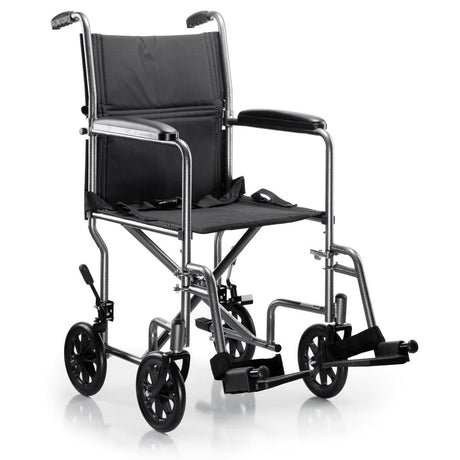HOW DO I KNOW IF IT'S TIME TO SEEK PROFESSIONAL HELP FOR MOBILITY ISSUES?
HOW DO I KNOW IF IT'S TIME TO SEEK PROFESSIONAL HELP FOR MOBILITY ISSUES?
WHAT KIND OF PROFESSIONALS SHOULD I CONSULT FOR MOBILITY IMPAIRMENTS?
WHAT KIND OF PROFESSIONALS SHOULD I CONSULT FOR MOBILITY IMPAIRMENTS?
WHAT ARE SOME WAYS I CAN SUPPORT A LOVED ONE WITH A MOBILITY IMPAIRMENT?
WHAT ARE SOME WAYS I CAN SUPPORT A LOVED ONE WITH A MOBILITY IMPAIRMENT?
HOW CAN I MAKE MY HOME MORE ACCESSIBLE FOR SOMEONE WITH MOBILITY ISSUES?
HOW CAN I MAKE MY HOME MORE ACCESSIBLE FOR SOMEONE WITH MOBILITY ISSUES?
HOW OFTEN SHOULD I REVIEW AND ADJUST MY MOBILITY PLAN?
HOW OFTEN SHOULD I REVIEW AND ADJUST MY MOBILITY PLAN?
WHAT SIGNS INDICATE THAT MY CURRENT MOBILITY AIDS OR PLAN NEEDS ADJUSTMENT?
WHAT SIGNS INDICATE THAT MY CURRENT MOBILITY AIDS OR PLAN NEEDS ADJUSTMENT?
WHAT ARE EFFECTIVE WAYS TO MONITOR PROGRESS IN MOBILITY AND INDEPENDENCE?
WHAT ARE EFFECTIVE WAYS TO MONITOR PROGRESS IN MOBILITY AND INDEPENDENCE?
HOW CAN I SET REALISTIC GOALS FOR IMPROVEMENT IN MOBILITY?
HOW CAN I SET REALISTIC GOALS FOR IMPROVEMENT IN MOBILITY?
HOW DO I CHOOSE THE RIGHT WHEELCHAIR FOR MY NEEDS?
HOW DO I CHOOSE THE RIGHT WHEELCHAIR FOR MY NEEDS?
WHAT SHOULD I CONSIDER WHEN USING A WHEELCHAIR FOR THE FIRST TIME?
WHAT SHOULD I CONSIDER WHEN USING A WHEELCHAIR FOR THE FIRST TIME?
WHAT ARE SAFE EXERCISES FOR SOMEONE OVER 55 WITH MOBILITY ISSUES?
WHAT ARE SAFE EXERCISES FOR SOMEONE OVER 55 WITH MOBILITY ISSUES?
HOW CAN EXERCISE IMPROVE MOBILITY FOR SENIORS?
HOW CAN EXERCISE IMPROVE MOBILITY FOR SENIORS?
SOMEONE I KNOW FELL RECENTLY. IS THAT A SIGN OF AGING?
SOMEONE I KNOW FELL RECENTLY. IS THAT A SIGN OF AGING?
WHAT CAUSES A FALL?
WHAT CAUSES A FALL?
WHAT SHOULD I DO AFTER A FALL?
WHAT SHOULD I DO AFTER A FALL?
HOW COULD I PREVENT FALLING AGAIN?
HOW COULD I PREVENT FALLING AGAIN?
ARE THERE EXERCISES THAT HELP PREVENT FALLING?
ARE THERE EXERCISES THAT HELP PREVENT FALLING?
ARE THERE THINGS I CAN DO TO PREVENT HURTING MYSELF IF I DO FALL?
ARE THERE THINGS I CAN DO TO PREVENT HURTING MYSELF IF I DO FALL?
IS THERE A TEST THAT THE DOCTOR CAN ORDER FOR ME TO SEE IF I AM LIKELY TO FALL?
IS THERE A TEST THAT THE DOCTOR CAN ORDER FOR ME TO SEE IF I AM LIKELY TO FALL?
WHAT MEDICAL CONDITIONS CAN INCREASE MY RISK OF FALLING?
WHAT MEDICAL CONDITIONS CAN INCREASE MY RISK OF FALLING?
WILL LIMITING MY ACTIVITIES PREVENT ME FROM FALLING?
WILL LIMITING MY ACTIVITIES PREVENT ME FROM FALLING?
Limiting activities can lead to further physical decline. It's better to stay active safely and make sure your environment is safe to reduce the risk of falls. Engaging in activities that maintain or improve strength, balance, and flexibility can actually help prevent falls. It's important to consult with a healthcare provider or physical therapist for guidance on safe and appropriate exercises.




